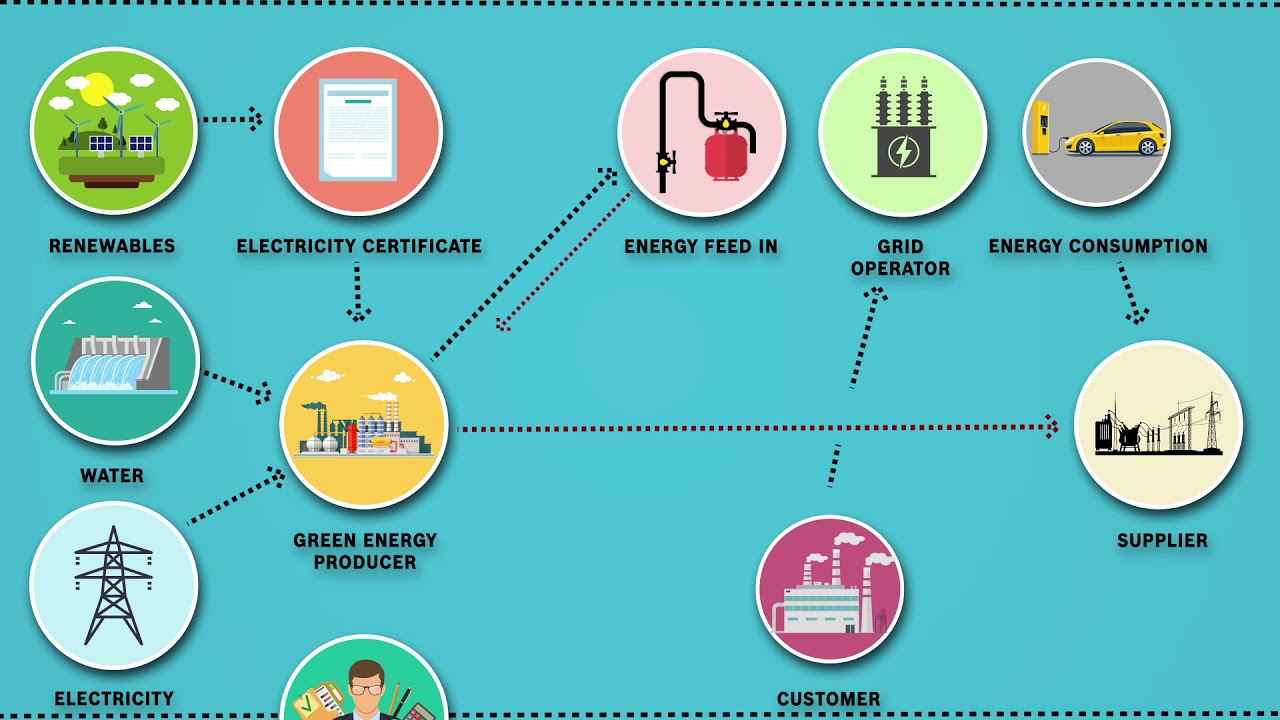
Interoperability within energy blockchains signifies the seamless integration and exchange of information among diverse systems and networks, fostering a cohesive and efficient infrastructure for the energy sector. This eradicates silos, allowing disparate systems to work harmoniously and enhances operational efficiency, laying the groundwork for a more sustainable and resilient energy landscape. However, achieving interoperability in energy blockchains faces challenges such as differing standards, protocols, and regulatory frameworks, impeding the seamless flow of information and hindering the full potential of decentralized energy systems. Amidst these challenges, finding a reliable source for investment education becomes crucial. Amidst these challenges, finding a reliable source for investment education becomes crucial, like this site.
Fundamentals of Energy Blockchains
Explanation of Blockchain Technology in the Energy Sector
Blockchain technology in the energy sector operates as a decentralized ledger, recording transactions across a network of computers. It ensures transparency, security, and traceability in energy-related processes.
Key Components and Features of Energy Blockchains
Energy blockchains consist of nodes, consensus mechanisms, and cryptographic techniques. These components work in tandem to validate and record transactions, securing the integrity of the data.
Existing Energy Blockchain Solutions and Their Limitations
Current energy blockchain solutions vary in design and functionality. While they offer advantages such as transparency and traceability, interoperability challenges persist due to differences in their underlying architectures.
The Need for Interoperability
Understanding the Fragmented Nature of Energy Systems
The energy sector operates in a fragmented landscape with diverse technologies, sources, and stakeholders. Interoperability is crucial to harmonize these elements and create a unified and efficient energy network.
Importance of Seamless Data Exchange in Energy Transactions
Seamless data exchange is fundamental for real-time decision-making and efficient energy transactions. Interoperability ensures that data flows seamlessly between various components, optimizing energy distribution and consumption.
Addressing Interconnectedness Issues in the Energy Industry
The intricate web of interconnected energy systems requires a standardized approach to data exchange. Interoperability addresses these issues, fostering collaboration and ensuring the reliability of the entire energy network.
Technical Considerations for Interoperability
Smart Contracts and Their Role in Standardizing Interactions
Smart contracts automate and enforce predefined agreements, streamlining interactions within energy blockchains. Their standardized execution contributes to a more interoperable and efficient energy ecosystem.
Blockchain Protocols and Standards for Energy Transactions
Standardizing blockchain protocols facilitates communication among different networks. Adopting common standards enhances interoperability, allowing seamless data exchange between disparate systems.
Cross-Chain Communication and Integration Solutions
Cross-chain communication solutions bridge the gap between different blockchains. These solutions enable interoperability by facilitating secure and transparent interactions between diverse energy blockchain networks.
Regulatory and Legal Implications
Compliance Challenges in a Decentralized Energy Ecosystem
The decentralized nature of energy blockchains poses challenges for regulatory compliance. Establishing a framework that ensures adherence to legal standards is essential to maintain trust and security.
Global Perspectives on Energy Blockchain Regulations
Global perspectives on energy blockchain regulations vary. Harmonizing these regulations is crucial for fostering international collaboration and ensuring a consistent approach to interoperability.
The Role of Standards Bodies in Facilitating Legal Frameworks
Standards bodies play a pivotal role in developing legal frameworks for energy blockchains. Their involvement ensures that regulations support interoperability, creating a conducive environment for the global energy sector.
Industry Collaborations and Initiatives
Overview of Current Efforts to Achieve Interoperability
Various industry stakeholders are actively involved in initiatives to achieve interoperability. Collaborative efforts aim to address challenges and develop solutions that enhance the compatibility of different energy blockchain systems.
Case Studies of Successful Interoperability Implementations
Examining successful interoperability implementations provides valuable insights into effective strategies. Case studies showcase practical approaches that have overcome challenges and achieved seamless integration.
Lessons Learned and Best Practices from Collaborative Initiatives
Reflecting on lessons learned and best practices from collaborative initiatives contributes to the collective knowledge pool. These insights guide future efforts, fostering an environment conducive to sustained interoperability.
Future Trends and Potential Impact
Emerging Technologies Shaping the Future of Energy Blockchains
The future of energy blockchains holds promise with emerging technologies. Artificial intelligence, the Internet of Things (IoT), and advanced cryptographic techniques are expected to further enhance interoperability and efficiency.
The Role of Artificial Intelligence in Enhancing Interoperability
Artificial intelligence plays a pivotal role in optimizing interoperability by analyzing vast datasets, predicting trends, and automating decision-making processes. Its integration enhances the overall efficiency of energy blockchains.
Anticipated Changes in Energy Market Dynamics with Improved Interoperability
Improved interoperability is poised to transform energy market dynamics. Enhanced collaboration, streamlined transactions, and increased efficiency are expected outcomes that will positively impact the entire energy value chain.
Conclusion
In conclusion, interoperability stands as the linchpin for the seamless functioning of energy blockchains, unlocking the full potential of decentralized energy systems and fostering collaboration toward a sustainable and interconnected future. A collective call to action is imperative for industry stakeholders and policymakers to prioritize and invest in this crucial element. This unified effort will expedite the transition to a more connected, efficient, and resilient energy landscape. Envisaging a future where energy systems operate cohesively and efficiently is not only attainable but imperative. With a dedicated commitment to interoperability, the energy sector can surmount existing challenges, laying the groundwork for a sustainable and interconnected future.
Also Read: Invisible Hands Shaping Crypto Narratives: Bitcoin and the Ghostwriter